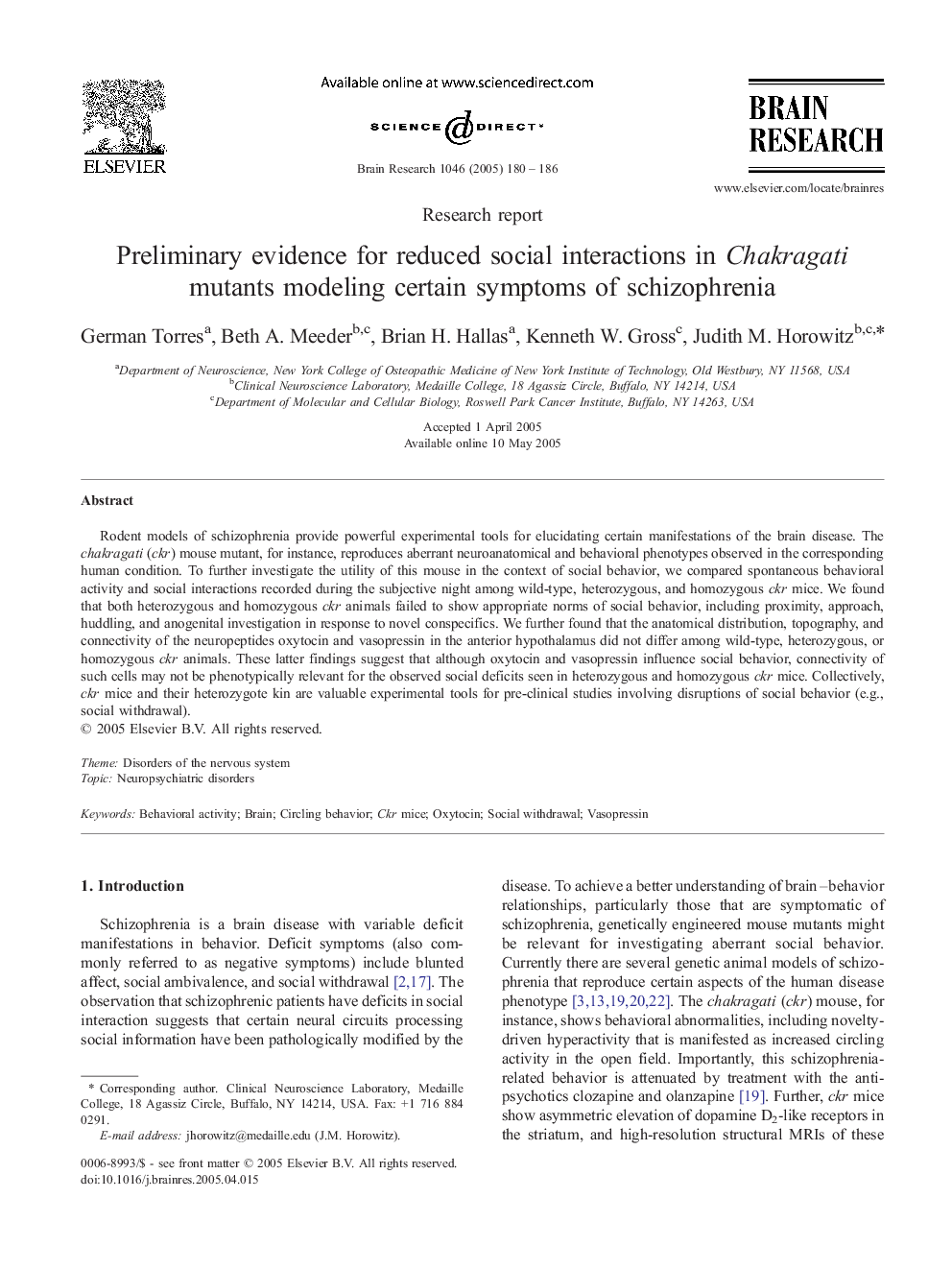| کد مقاله | کد نشریه | سال انتشار | مقاله انگلیسی | نسخه تمام متن |
|---|---|---|---|---|
| 9416351 | 1614332 | 2005 | 7 صفحه PDF | دانلود رایگان |
عنوان انگلیسی مقاله ISI
Preliminary evidence for reduced social interactions in Chakragati mutants modeling certain symptoms of schizophrenia
دانلود مقاله + سفارش ترجمه
دانلود مقاله ISI انگلیسی
رایگان برای ایرانیان
کلمات کلیدی
موضوعات مرتبط
علوم زیستی و بیوفناوری
علم عصب شناسی
علوم اعصاب (عمومی)
پیش نمایش صفحه اول مقاله

چکیده انگلیسی
Rodent models of schizophrenia provide powerful experimental tools for elucidating certain manifestations of the brain disease. The chakragati (ckr) mouse mutant, for instance, reproduces aberrant neuroanatomical and behavioral phenotypes observed in the corresponding human condition. To further investigate the utility of this mouse in the context of social behavior, we compared spontaneous behavioral activity and social interactions recorded during the subjective night among wild-type, heterozygous, and homozygous ckr mice. We found that both heterozygous and homozygous ckr animals failed to show appropriate norms of social behavior, including proximity, approach, huddling, and anogenital investigation in response to novel conspecifics. We further found that the anatomical distribution, topography, and connectivity of the neuropeptides oxytocin and vasopressin in the anterior hypothalamus did not differ among wild-type, heterozygous, or homozygous ckr animals. These latter findings suggest that although oxytocin and vasopressin influence social behavior, connectivity of such cells may not be phenotypically relevant for the observed social deficits seen in heterozygous and homozygous ckr mice. Collectively, ckr mice and their heterozygote kin are valuable experimental tools for pre-clinical studies involving disruptions of social behavior (e.g., social withdrawal).
ناشر
Database: Elsevier - ScienceDirect (ساینس دایرکت)
Journal: Brain Research - Volume 1046, Issues 1â2, 7 June 2005, Pages 180-186
Journal: Brain Research - Volume 1046, Issues 1â2, 7 June 2005, Pages 180-186
نویسندگان
German Torres, Beth A. Meeder, Brian H. Hallas, Kenneth W. Gross, Judith M. Horowitz,